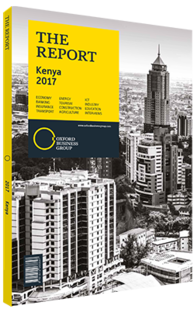Kenya aims to find the right balance for utility prices
Tariffs are a core aspect of debate in the Kenyan power sector, with a focus on ensuring that they fall to levels low enough to stoke consumption but that they remain sufficiently high to attract investment. Finding the right balance can be tricky.
Political Pressure
With many sub-Saharan African economies having large low-income populations, ensuring access to affordable electricity is key. In Tanzania, for example, power sector executives were sacked or demoted in January 2017 following the introduction of tariffs that had been approved by an independent regulatory agency, but which were then deemed by politicians to be too high. Protests in Côte d’Ivoire over tariff rises in January 2016 prompted President Alassane Ouattara to request utility companies to reimburse payments in excess of previously agreed tariff increases.
Even those with power purchase agreements are likely to be exposed to tariffs, as they are often too low for transmission and distribution companies to recover their costs and invest in their assets, making them less able to pay for the power they take. Governments have been aiming to reduce their exposure through subsidies, but must balance competing priorities. The cost of power is often cited as a constraint to boosting manufacturing in Kenya.
Regulatory Formula
Power tariffs in Kenya are set on a monthly basis by the Energy Regulatory Commission (ERC), using a formula that allows for cost recovery and a profit margin. Costs for feedstock, where applicable, are factored into the price and passed on to customers. Tariffs are set according to the type of user and the amount used, with the price per KWh falling as usage climbs.
As of April 2016 the average cost was KSh20 ($0.20)/KWh. The country’s primary power producer, Kenya Electricity Generating Company, unveiled a 40-month strategy to reduce that figure by 47.3%. The plan specified that the average cost of power could fall from KSh20 ($0.20) to KSh10.54 ($0.10). For industrial customers the drop would be 37.1%. In April 2016 they were paying an average of KSh14.30 ($0.14), which was seen dropping to KSh9 ($0.09).
Kenya’s power appears costly in a global context. A 2015 study found that the most expensive electricity among major economies was in Italy, at $0.21/KWh. Second on the list was Germany, at $0.19, followed by the UK, at $0.15. The price per KWh in South Africa was just under $0.09, although the study found that the tariff increase in that country in 2014 was the largest in its sample.
Solutions
One way to reduce the prices people and businesses pay would be to subsidise the cost, but several African countries that do this have more dysfunctional electricity sectors because generators and distributors cannot generate enough revenue. Often distributors lack the ability to properly bill customers and collect from them, and to pay generation companies. Building up arrears in the system can ruin the creditworthiness of a power provider and discourage investment in new capacity.
To help keep prices low, the Kenyan authorities focus on feedstock. Increased use of diesel and heavy fuel oil in power plants has been blamed for recent cost increases, and the country is aiming to reduce its reliance on these sources. The cost of production using diesel fuel is around KSh20 ($0.20)/ KWh, according to Kenya Electricity Transmission Company, compared to KSh3 ($0.03) for hydro power. Wind, solar and geothermal plants all have higher up-front costs, but using these renewable resources eliminates the need to buy feedstock over the life of a plant. The cost of feedstock peaked as an issue in August 2015, when its part of the power tariff reached a nine-month high of KSh3.11 ($0.03)/ KWh. At that point the ERC told generators to seek lower-cost sources, and by the Spring of 2016 that part of the tariff had fallen to KSh2.31 ($0.02)/KWh.
You have reached the limit of premium articles you can view for free.
Choose from the options below to purchase print or digital editions of our Reports. You can also purchase a website subscription giving you unlimited access to all of our Reports online for 12 months.
If you have already purchased this Report or have a website subscription, please login to continue.

